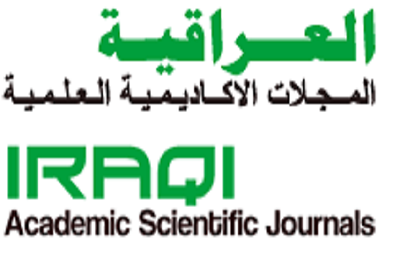The effect of a rehabilitation curriculum for fencers with partial tears The lateral deltoid ligament and its effect on balance using the manufactured device
Main Article Content
Abstract
The aim of the research was to: - Prepare a rehabilitation approach for injury to the lateral ligaments of the ankle joint in players injured in fencing. The researchers used the experimental approach with a single group design to suit the nature of the problem to be solved, in addition to manufacturing a device consisting of several sensors to measure the degree of injury and the level of improvement achieved. The sample was The research included players with partial rupture of the lateral deltoid ligament. The most important results reached by the researchers were: that the rehabilitative exercises used by members of the research sample had a positive impact on the balance of the ankle joint. The most important recommendations were: - Adopting the manufactured device to measure the severity of the injury and the level of improvement. The result.
Article Details

This work is licensed under a Creative Commons Attribution-NonCommercial 4.0 International License.
References
Aldewan, L. H. (2005). The most important obstacles facing girls’ clubs in Iraq. Journal of Studies and Researches of Sport Education, 17.
Aldewan, L. H. , Jaber salam, & Yassin, S. (2016). The effect of the impact of the use of guided discovery method to teach some skills in epee fencing game. Journal of Studies and Researches of Sport Education, 49, 11–25. https://www.iasj.net/iasj/article/126002
Al-Kazemi, D. H. (2012). Scientific applications for writing educational and psychological dissertations and dissertations (2nd edition, p. 137). University of Baghdad, College of Physical Education.
Fatimah Abed Malih, & Marib Jawad Kadhim. (2016). Design and manufacture of the electronic device to measure the compatibility and speed of motor response lower limbs fencing. The Swedish Journal of Scientific Research, 26. https://sjsr.se/en/issue.php?issue=26
Hamidi, A. K. T., & Jassim, A. H. A. (2022). The effect of rehabilitation exercises with the help of physical therapy devices and their effect in treating the partial tear of the connective muscles of football players. Journal of Physical Education Studies and Research, 32(2), 28–38. https://doi.org/10.55998/jsrse.v32i2.317
Hassanein, M. S. (2004). Measurement and Evaluation in Physical Education and Sports. Dar Al-Fikr Al-Arabi.
Jawad Kadhim, M., & Mousa, A. (2024). The use of an innovative device to improve the efficiency of the posterior quadriceps muscle of the man after the anterior cruciate ligament injury of advanced soccer players. Journal of Physical Education, 36(1), 214–239.
Mousa, H. J., Hadi, A. K., & Ali Kadhim, M. A. (2019). Effectiveness of the Ultrasonic Device with Therapeutic Exercises in the Rehabilitation of Knee Joint Injury in Football Players. Indian Journal of Forensic Medicine & Toxicology, 13(4).
Muhammad, S. K. (2013). The functional anatomy of athletes (p. 52). Das Printing Company.
Obaid, A. H. (2013). Sports Medicine, Athletes’ Injuries (p. 345). Dar Al-Diyaa Printing.
Obaidat, D. (1984). Scientific research - understanding - its tools - methods. In Dar Al-Fikr for Publishing and Distribution (p. 116). 52.
sarah, S. S., Makki, J. O., & Salam, J. A. (2017). Designing an auxiliary device to measure the level of performance of some offensive skills for young fencing players in the southern region. Journal of Studies and Researches of Sport Education , /(53), 359–373. https://www.iasj.net/iasj/article/147727
Shabib, S. S., Abdullah, S. J., & Odeh, makki J. (2020). An auxiliary device to evaluate the performance of some skills of fencing players (Patent 419 / 2019). 6101.





 IASJ
IASJ CC-BY-4.0
CC-BY-4.0 turnitin
turnitin ISSN
ISSN DOAJ
DOAJ Crossref
Crossref GoogleScholar
GoogleScholar Orcid
Orcid